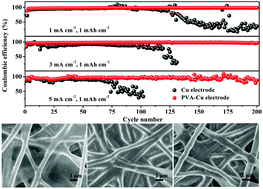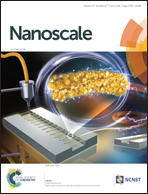Uniform Li deposition regulated via three-dimensional polyvinyl alcohol nanofiber networks for effective Li metal anodes†
Abstract
Lithium metal anodes are considered to be the most promising anode material for next-generation advanced energy storage devices due to their high reversible capacity and extremely low anode potential. Nevertheless, the formation of dendritic Li, induced by the repeated breaking and repairing of solid electrolyte interphase layers, always causes poor cycling performance and low coulombic efficiency, as well as serious safety problems, which have hindered the practical application of Li anodes for a long time. Herein, we design an electrode by covering a polyvinyl alcohol layer with a three-dimensional nanofiber network structure through an electrospinning technique. The polar functional groups on the surface of the polymer nanofibers can restrict the deposition of Li along the fibers and regulate the deposition of Li uniformly in the voids between the nanofibers. Owing to the structural features of the polymer, the modified Li|Cu electrode displays excellent cycle stability, with a high coulombic efficiency of 98.6% after 200 cycles at a current density of 1 mA cm−2 under a deposition capacity of 1 mA h cm−2, whilst the symmetric cell using the polymer modified Li anode shows stable cycling with a low hysteresis voltage of ∼80 mV over 600 h at a current density of 5 mA cm−2.



 Please wait while we load your content...
Please wait while we load your content...